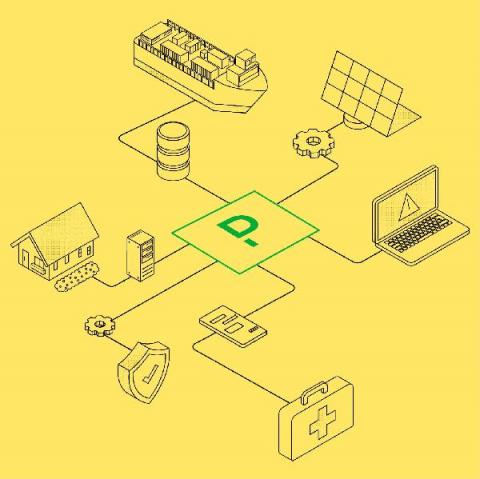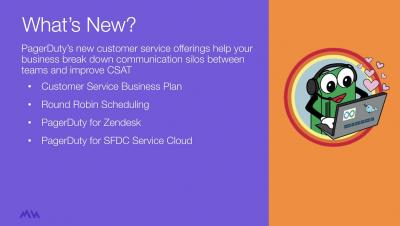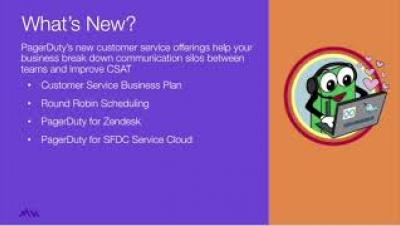Operations | Monitoring | ITSM | DevOps | Cloud
August 2021
Has the firefighting stopped? The effect of COVID-19 on on-call engineers
With digital becoming the primary channel for work, education, shopping, and entertainment in the last 18 months, it’s no surprise that workloads for technical teams and on-call engineers have increased. Data from PagerDuty’s inaugural platform insights report, The State of Digital Operations, highlights this reality. As of July 2021, the average number of events managed daily by PagerDuty is 37 million, with 61,000 of those being critical incidents.
What's new: Updates to Event Intelligence, mobile, and more!
As we near the end of the Summer season, we’re excited to announce a new set of updates and enhancements to the PagerDuty platform. These updates will help our users and customers: Make sure to view the latest PagerDuty Pulse or learn more from our community team and developer advocates who have launched new programs to help you learn more about our latest products and best practices.
Best practices to help retailers make the grade for the holiday season
It’s hard to believe we’re already talking about the return to school, but it’s set to be a big one. In fact, this year promises to be the biggest in the last five years. The National Retail Federation expects back-to-school spending to reach $37.1B , up from $33.9B last year. Back-to-college spending is also expected to rise, reaching $71B this year. This increase is buoyed by parents and students gearing up for their first in-person classes after a year of virtual learning.
How MBTA modernized incident response to reduce alert fatigue and improve collaboration
Citizens utilize mobile and consumer-facing applications in everyday life, so it’s no surprise that they demand seamless access and high availability of government services online. Whether it’s making payments or applying for benefits, citizens and constituents alike expect these services to be available around the clock.
PagerDuty Summit 2021 Highlights
Live Coding on the PagerDuty Terraform Provider with Scott McAllister
How the technology you choose influences CloudOps maturity
As the world becomes increasingly digital-first, it’s more important than ever for organizations to keep services always-on, innovate quickly, and deliver great customer experiences. Uptime is money, so it’s no surprise that many have made the shift to cloud in recent years in order to make use of its flexibility and scale—while controlling costs. And while 2020 wasn’t easy for any organization, those that are thriving have embraced the digital mindset.
The Top 4 Key Levers to Build Towards Long-Lasting Digital Operations Maturity
Digital operations maturity is a journey. The first step is to understand where you are, where you want to get to, and what’s keeping you from getting there. Only then can you make strategic decisions and lay out a plan for how to approach any hurdles and land where you want your organization to be. For many organizations, upleveling operational maturity requires investment in driving cultural change with fundamental shifts to operating models.
Real-time digital operations management puts connected vehicles on the road to success
As technology advances and applications for the Internet of Things (IoT) continue to expand, industrial and manufacturing companies are embedding more digital systems into their operations. From smart factories and intelligent shipping to automation and 3D printing, Industry 5.0 has arrived.
How to Avoid the Executive 'Swoop and Poop' and Other Best Practices for Operational Maturity
We’re eating at restaurants again. We’re seeing family after too long apart. Some of us may even be returning to the office. But, that doesn’t mean that the pressure is off for digital services, and growing in operational maturity still remains top of mind. While the digital transformations have been taking place for the last two decades, COVID-19 added pressure to speed initiatives.
Supercharging incident response with runbook automation
The global pandemic is estimated to have accelerated digital transformation by at least seven years—and it’s showing no signs of stopping. In fact, companies are investing even more into software-driven experiences. A recent Gartner forecast points to worldwide IT spending increasing 8.4% to $4.1 trillion in 2021, with much of that spend on mission-critical, customer-facing services.
What's the ROI? How Operational Maturity Improves Customer and Team Satisfaction
Are we looking at the new normal now? In the last 18 months, organizations all over the world were compelled to undergo a rapid digital transformation and mature their operations to support services that were under unprecedented strain. Digital transformation allows companies to embark on large-scale cloud migrations and adopt modern development methods like DevOps and Agile.
How PagerDuty Helps Manage Hybrid Infrastructure and Complex Ops Across Industries
If there’s one thing we learned from the 80+ sessions from Summit 2021, it’s that across the industries, companies are continuing to accelerate innovation in a bid to meet growing customer expectations of always-on services across all channels. In financial services, disrupting traditional banking or rethinking access to advisory services comes with operational and regulatory challenges.











